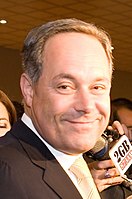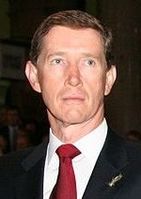New South Wales legislative election, 2007
|
|
|||||||||||||||||||||||||||||||||||||
|---|---|---|---|---|---|---|---|---|---|---|---|---|---|---|---|---|---|---|---|---|---|---|---|---|---|---|---|---|---|---|---|---|---|---|---|---|---|
|
|||||||||||||||||||||||||||||||||||||
|
All 93 seats in the New South Wales Legislative Assembly and 21 (of the 42) seats in the New South Wales Legislative Council 47 Assembly seats were needed for a majority |
|||||||||||||||||||||||||||||||||||||
|
|||||||||||||||||||||||||||||||||||||

Legislative Assembly after the election
|
|||||||||||||||||||||||||||||||||||||
|
|||||||||||||||||||||||||||||||||||||
Elections for the 54th Parliament of New South Wales were held on Saturday, 24 March 2007. The entire Legislative Assembly and half of the Legislative Council was up for election. The Australian Labor Party led by Morris Iemma won a fourth four-year term against the Liberal-National coalition led by Peter Debnam.
Labor's substantial majority survived the election almost intact. The Liberals succeeded in taking two independent-held seats and one Labor-held seat, whilst the Nationals and an independent each took one Labor-held seat.
Labor, running on the slogan "More to do, but we're heading in the right direction," heavily outspent the Liberals, whose slogan was "Let's fix NSW." Though water and infrastructure emerged as key issues in the campaign, much of the parties' advertising focussed on the negatives: Debnam's business record and Labor's record in office.
The media concluded that the choice facing voters was in finding the lesser of two evils: the three major newspapers sold in New South Wales endorsed Debnam, though not without criticising his ineptitude on the campaign trail.
The result was widely perceived as a foregone conclusion, with opposition leader Peter Debnam conceding as much the week before the poll. Opinion polls consistently put Labor ahead in terms of voting intention and preferred premier.
The ALP would eventually lose government at the next election in a landslide defeat in 2011. There has been a view that the party would have suffered a less worse defeat if it had lost government at the 2007 election.
The New South Wales Legislative Assembly has 93 members elected for four-year terms using instant-runoff voting, a form of preferential voting. The voting system is the same as for the Australian House of Representatives except that New South Wales has optional preferential voting. This means that while voters may number every candidate if they wish, their vote is still formal if they choose not to. They may vote for one candidate only, or for as many candidates as they choose, provided that they number them in correct sequence.
...
Wikipedia


